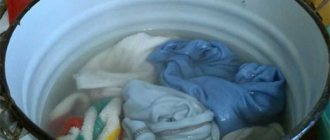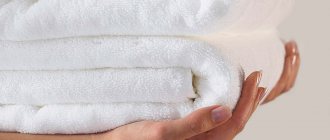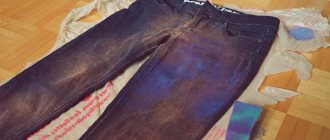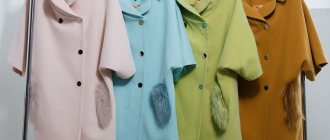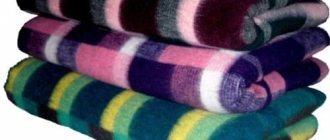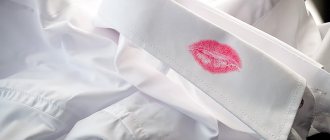Boric acid is used to bleach wool, silk, cotton, linen, as well as natural fabrics mixed with synthetics. The product is suitable for removing gray and yellowness from baby clothes, diapers, lace underwear, curtains and tulle. Boric acid destroys fungus and mold, has a disinfectant effect, and also softens water. With its help, you can even out the color of a faded item and refresh the color of colored fabric.
Boric acid powder will help remove fresh and old stains on upholstered furniture and car covers, and get rid of unpleasant odors in shoes.
You can also use boric acid to clean kettles, frying pans, pots and neutralize unpleasant odors in the house.
The product is suitable for the following purposes:
Whitening:
- yellowed things;
- removing grayness from things.
Removing paint:
- oil;
- gouaches;
- watercolors;
- acrylic.
Cleaning food stains:
- coffee and tea;
- chocolate;
- wine and juice.
Removal of biological materials:
- urine;
- feces;
- blood;
- vomiting.
Cleaning kitchen utensils:
- teapots;
- pots;
- frying pans
Cleaning from contaminants:
- resin;
- rust.
Odor removal:
- cigarettes;
- gasoline;
- sweat;
- urine;
- staleness and old age;
- from shoes.
Cleaning traces of persistent stains from paints, resins, rust from light-colored fabrics
- Composition of the product: 100 milliliters of water, 50 milliliters of vinegar, 25 milliliters of a liquid solution of boric acid 3%, 25 milliliters of hydrogen peroxide 3%.
- Step-by-step instructions: first try to mechanically remove or clean off the contamination. After this, add vinegar, boric acid and peroxide to the water. Heat the resulting mixture to a temperature of 50-70 degrees. Apply the resulting mixture to the areas to be cleaned using a stiff brush for 20 minutes. Rinse off the mixture and wash the item. The procedure can be repeated after 2 weeks.
Pros and cons of use
Washing with a medicinal product has a number of advantages, including:
high-quality bleaching of fabrics;- removal of grayness and yellowness;
- wash in cold water;
- bleaching delicate fabrics, including underwear;
- the possibility of using acid for hand and machine washing, for boiling;
- minor financial costs;
- high-quality disinfection of things.
The product has virtually no disadvantages if used correctly . The only downside is the need for precise dosing.
If recommended concentrations are exceeded, tissue damage may occur. This is especially true for delicate fabrics, for example, lace, satin, wool, silk.
Refreshing and evening out the color of items made from plain fabrics
- Ingredients: 10 grams of boric acid, 1-2 tablespoons of washing powder.
- Step-by-step instructions: pour boric acid mixed with washing powder into the powder compartment of the washing machine, which will be required in 2 times less than the usual amount. Place laundry made from plain fabrics into the drum. Wash items as usual. The composition softens water, refreshes and evens out the color of fabrics.
Did you like our methods for bleaching and removing stains from fabrics using boric acid?
Not really
In what form is boric acid needed (powder or liquid)
In pharmacies, boric acid is sold in powder form, packaged in 10 g bags, or in the form of an alcohol solution. There are mixtures with glycerin and aqueous solutions, as well as ointments. The first two types are suitable for whitening; the powder preparation is most often used.
The obvious advantage of boric acid is its cost. Such a purchase is incomparable with the costs of industrial bleaches like Vanish. You will spend about 10 rubles for one bag.
We return the whiteness to yellowed laundry
After many washes, light-colored fabric can acquire a gray, yellow, or light green tint. There are several reasons for this negative impact:
- Washing water with a high iron content (more than 7 degrees of hardness), nitrates.
- The use of washing powders, stain removers with a high content of phosphates, flatates, and hydrochloric acid.
- Regularly wash light-colored bed linen with dark-colored items.
Folk methods that use gentle detergents will help restore a presentable appearance to products. In addition to the loss of natural shine and color, stains of various origins appear on the fabric.
Know your limits
Why are we used to thinking that if we add more powder or add more fabric softener, the washing will certainly be more effective? We are wrong!
Rare shot: Viktoria Isakova showed her grown-up daughter from Yuri Moroz (new photo)
Lost weight: what Sofia Tarasova sacrificed for the sake of “VIA Gra” (new photos)
The money tree pleases with lush flowering: my secret is in caring for the leaves
Know not to use too much detergent. In this case, the principle “the more the better” does not work, and on the contrary, it is harmful. You may find it hard to believe, but too many detergents and conditioners will make your clothes even dirtier after washing. Therefore, rinse your laundry as thoroughly as possible so that no detergent particles remain on the fabrics.
Method 7 - ammonia
Ammonia can be used on delicate fabrics, including wool. They do it like this:
- Take 10 liters of water, put 6 tablespoons of salt, 50 grams of powder, a spoonful of peroxide and a spoonful of ammonia into it. All this is diluted to a homogeneous mass.
- Place things in the resulting mixture and leave for 10 hours.
- After this, the products are washed by hand or in a machine, choosing a delicate wash cycle.
Tip: You can even wash silk items with ammonia. It will not damage the fabric.
How to use for whitening?
There are 5 ways to use the product:
- Soak. Allows you to soften dirt so that it is easier to remove when washing. For a whitening effect, dissolve 1–2 tbsp in 2 liters of water (hot). spoons of boric acid. Things are placed in the solution and left for 2 hours.
- Removing fresh stains. If fruit juice, blood or coffee accidentally spills on white linen, sprinkle the area with boron powder crystals and add a few drops of water. Then rub the stain lightly with a brush and wait until the product dries completely. Then the procedure can be repeated, and if the laundry is clean, rinse it in water or brush off the white dust (in case washing is impossible). Liquid boric acid can be dropped onto a cotton swab and applied as a compress to the area of contamination.
- Odor removal and whitening. To remove urine stains and mold from white linen, dissolve 10 g of boric acid in 2 liters of hot water and add 0.5 cups of vinegar. Things are placed in the solution for an hour. Then wash and dry.
- Removing old stains. Dissolve 5 tbsp in 2 liters of hot water. spoons of ammonia and boric alcohol. Place the laundry there and, stirring occasionally, keep until the water cools completely. Then wash with powder.
- Use in washing machine. When washing white laundry, add 0.5 cups of boric acid to the laundry detergent. Wash at 60–90 degrees. This method will help remove yellowness.
Boric acid effectively removes yellowing of white fabric, marks from fruits, coffee, sweat, and fat.
Whitening socks, knee socks, children's tights
To make your socks and tights snow-white again, you need to do the following:
- Wash items with soap.
- Fill clean socks and tights with hot water with the addition of 2 tbsp. spoons of boric acid.
- Leave on for 30 minutes and then scrub lightly with a brush.
- Rinse in hot water.
We recommend: 5 ways to use salt to remove unpleasant odors and dampness
Bleaching underwear and tulle
Products of this type require careful care. And delicate boric acid is ideal for whitening them.
Instructions:
- Fill a bowl with slightly warm water.
- Dilute boric alcohol in it at the rate of 2 tbsp. spoons per 1 liter.
- Soak tulle or cotton underwear for 3 hours.
- Wash as usual.
Whitening bed linen and towels
The product shows the greatest activity in hot water. To bleach bed linen and towels, it is recommended to use boiling:
- Fill a large saucepan with 5–7 liters of water.
- Add 5 tbsp. spoons of washing powder and boric acid.
- Place linen and towels inside.
- Place the pan on the fire and bring to a boil.
- Continue boiling the laundry for 30 minutes.
- Leave in the pan until cool.
- Rinse thoroughly.
Method 11 – mustard
Lacy underwear and light-colored items made from delicate fabrics can be bleached using ordinary mustard powder. Use it like this:
- Take a tablespoon of powder, pour a liter of hot boiled water and leave to settle for two hours.
- After this, the water is drained and new mustard is added. This step is repeated until the required amount of water is obtained for the upcoming wash.
- Then simply use the infused water to wash things with soap or powder.
Important: unlike other presented methods of bleaching things with folk remedies, this one can be used quite regularly, since it is least harmful to the fabric itself. You just need to get used to using settled water, and there will be no problems with it.
What can harm tissue?
Damage occurs due to the presence of aggressive properties in the bleaching agent. Chlorine is contraindicated for delicate fabrics (silk, chiffon, lace). Undiluted chlorine-containing products can corrode laundry to holes or cause the threads to become brittle. Frequent washing and boiling will ruin things. It is necessary to take breaks - wash 4 times without bleaching. Use folk remedies at home according to instructions and purpose.
Pay attention to woolen fabrics. High temperatures are harmful, the fur settles and loses its appearance.
Do not soak laundry for more than 6 hours, do not increase the concentration of chemicals. The clothing labels contain all the necessary information, effective recommendations on soaking and washing methods. If there is an icon in the form of a triangle crossed out by two stripes, then bleaching clothes is not recommended.
The article has been verified by the editors
Important Tips
To ensure that washing with boric acid is as effective as possible, you need to take into account the following recommendations:
- Before the first treatment, test the product on an inconspicuous area and monitor the tissue reaction.
- Do not soak several things at once, even if their shades differ slightly.
- Carefully study the information on the product label and strictly follow the manufacturer’s recommendations.
- Hand washing is carried out only with gloves, as the solution dries the skin.
- Use a pharmaceutical fabric bleaching agent only when necessary. Regular washing with its use will lead to rapid wear of fabrics.
In order for the drug to effectively whiten things, they need to be washed as early as possible, when the first signs of grayness or yellowness appear.
You will find maximum useful information about washing clothes and various fabric products here.
Precautionary measures
Boric acid does not irritate the skin. It is odorless and tasteless. Previously, it was used to disinfect pacifiers and baby supplies, and sprinkled on wounds. However, later toxicologists discovered that boron belongs to the group of general cellular poisons. When systematically applied to mucous membranes or ingested, the substance causes poisoning and affects the brain, hematopoietic and germ cells.
There will be no harm from contact with the skin of your hands. The use of gloves is not necessary; you can mix the laundry with your hands. But after the procedure, you should wash your hands with soap and rinse or wash your clothes well.
Boric acid should be kept out of the reach of children and should never be taken orally.
Method 4 – potassium permanganate
This product will allow you to effectively get rid of yellowness and stubborn stains on fabric. It can be used in two ways. So, if the stain is small, you should take a few crystals of potassium permanganate and add them to a glass of ordinary table vinegar, then you will need to take a cotton pad, soak it well in the resulting solution and wipe the stain with it. This product can be used even if you do not have the opportunity to organize a full wash of laundry.
If you need to eliminate a large stain or remove yellowness from an item, you will need to act differently. You should take a bucket, fill it with water, heat this water on the stove, and then add a small amount of potassium permanganate and washing powder to it. Your solution should turn out to be a soft pink color. After this, you will need to wait until this solution cools down a little, wash the items as usual and rinse them well in this product.
We return the whiteness to yellowed laundry
After many washes, light-colored fabric can acquire a gray, yellow, or light green tint. There are several reasons for this negative impact:
- Washing water with a high iron content (more than 7 degrees of hardness), nitrates.
- The use of washing powders, stain removers with a high content of phosphates, flatates, and hydrochloric acid.
- Regularly wash light-colored bed linen with dark-colored items.
Folk methods that use gentle detergents will help restore a presentable appearance to products. In addition to the loss of natural shine and color, stains of various origins appear on the fabric.



